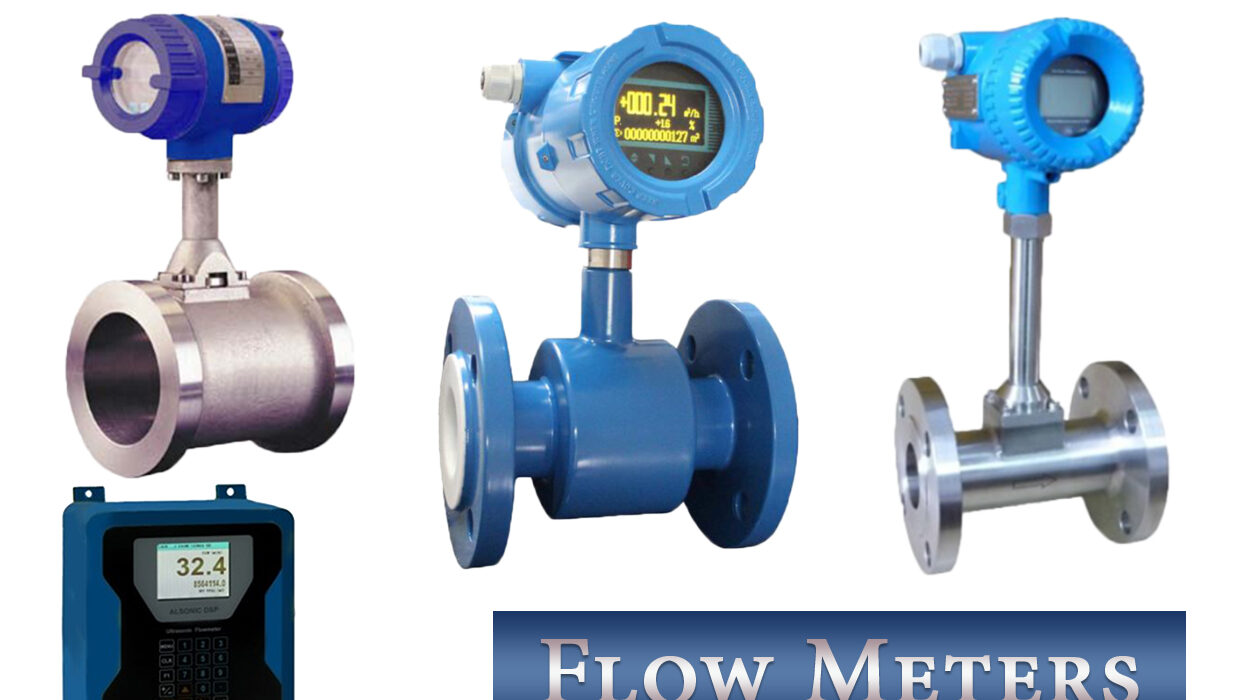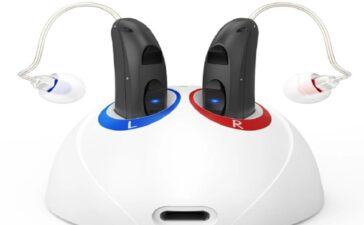A flow meter is a device used to measure the rate of flow of a liquid or gas through a pipe or conduit. It works by measuring the velocity of the fluid passing through it, and then calculating the flow rate based on that velocity and the cross-sectional area of the pipe. There are many different types of flow meters available, ranging from simple mechanical devices to sophisticated electronic sensors. Some common types include differential pressure meters, electromagnetic meters, ultrasonic meters, turbine meters, and vortex meters. Flow meters are widely used in many different industries, including oil and gas, chemical processing, water management, and HVAC (heating, ventilation, and air conditioning) systems.
How to Choose a Flow Meter
Choosing a flow meter can be a complex process that involves considering a number of different factors, including the type of fluid being measured, the flow rate range, the required accuracy, the pressure and temperature conditions, the pipe size, and the available installation space. Here are some general steps to help you choose the right flow meter for your application:
- Determine the properties of the fluid: Consider the characteristics of the fluid being measured, including its viscosity, density, conductivity, corrosiveness, and potential for contamination. This will help you determine which types of flow meters are suitable.
- Determine the flow rate range: Determine the minimum and maximum flow rates that need to be measured, as well as any expected flow fluctuations or variations. This information can help you select a flow meter with an appropriate measurement range.
- Consider accuracy requirements: Determine how accurate the flow measurements need to be, and whether any specific performance standards or regulations must be met.
- Consider pressure and temperature requirements: Determine the pressure and temperature range of the fluid being measured, as well as the ambient temperature around the flow meter. This information can help you choose a flow meter that is capable of operating under these conditions.
- Consider the pipe size and type: Determine the pipe size and material, as well as any restrictions in the installation space. This information can help you choose a flow meter that is compatible with the existing piping system.
- Choose the appropriate flow meter type: Based on the above considerations, select the appropriate flow meter type, such as differential pressure meters, electromagnetic meters, ultrasonic meters, turbine meters, or vortex meters.
- Verify the suitability of the selected flow meter by testing it in the actual application environment.
Overall, choosing the right flow meter requires careful consideration of a range of factors specific to the application. It is often helpful to consult with an expert or manufacturer representative to ensure that the selected flow meter meets the application requirements.
Here are the best 8 flow meters for accurate measurement and control of fluids:
1, Gas Flow Meter
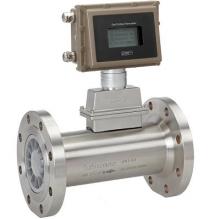
A gas flow meter is an instrument that is used to measure the flow of gas on a pipeline. The flow sensors that are installed in the pipeline are used to display and record the amount of gas that passes through the pipeline. The gas flow meters can be used to measure gas, air, nitrogen, acetylene, phosgene, hydrogen, natural gas, nitrogen, LPG gas, hydrogen peroxide, flue gas, methane, butane, chlorine, gas, biogas, CO2, O2, compressed air, argon gas, toluene, benzene, xylene, hydrogen sulfide, sulfur dioxide (SO2), ammonia, propane gas flow meters, etc.
2, Turbine Flow Meter
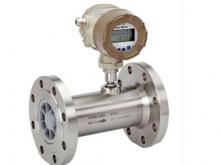
With a precision of 1.5%, turbine gas meters are rugged and designed to measure gas with high accuracy. Before leaving the factory with the shortest possible installation length, all of these turbine meters (TUF) comply with all international standards and are approved for quality. The electronic gas turbine flow meter has both digital outputs and a digital display. Gas, biogas, natural gas, N2, O2, helium (He) gas, ethylene (C2H4) gas, carbon dioxide (CO2) gas, methane gas, butane, propane, compressed natural gas, air, volumetric flow meter.
3, Digital Nitrogen Gas Flow Meter
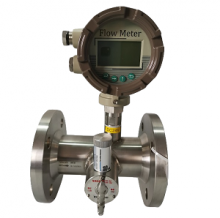
A Digital Nitrogen Gas Flow Meter is a device used to measure the flow rate of nitrogen gas. It typically consists of a digital display unit and a sensor that is installed in the gas line. As the gas flows through the sensor, it generates a signal that is sent to the display unit, which shows the current flow rate in real time. This type of flow meter is commonly used in industrial settings where precise control of gas flow is required for processes such as welding, metal fabrication, and food packaging.
4, 4″Turbine Flow Meter
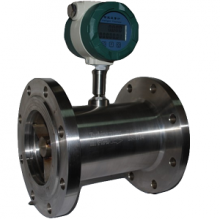
4” Turbine flowmeters means the flow meter diameter is 4 inch or DN100. Turbine flow meters (TUF) are a type of velocity flowmeter, which is widely used in industrial production due to their high measurement accuracy, fast response, and pressure resistance. The turbine flow meter measures the flow rate and total flow of water, diesel, gasoline, condensate, RO water, natural gas, air, and LPG gas, as well as turbine flow meters for gas and biogas.
5, High pressure turbine flow meter
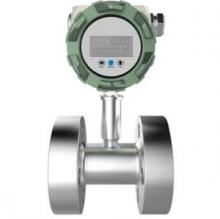
The turbine flow meter, a volumetric flow rate measurement instrument, is used to determine the flow rate of fluids electronically. Silver Instruments offers turbine flow meters with high pressure ratings under 6500 PSI. In order to determine a value of its flow rate, this flow meter uses the flow movement of a variety of fluids. It has a simple design with great accuracy. Turbine flow meters are widely used in a variety of commercial applications due to their easy maintenance and efficiency. Turbine flow meters can be used as high pressure flow sensors, such as 300LB, 600LB, or 900LB pressure.
6, Turbine Flow Meter Stainless Steel
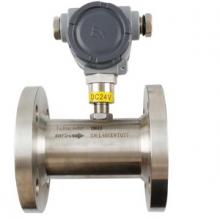
A turbine flow meter measures fluid flow rate using an electronic flow measurement instrument. A volumetric flow meter based on voltage and pulses is one of the most commonly used devices due to its precision and accuracy. Heavy plants and industries concerned with fluids use turbine flow meters to measure flow rates. The turbine flow meter is constructed from stainless steel; therefore, it can be used to measure low-corrosive liquids.
7, Turbine Flow Meter for Natural Gas
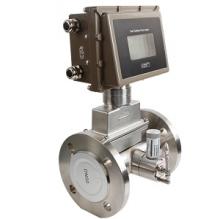
A turbine flow meter for natural gas is a type of flow meter that uses a turbine to measure the flow of natural gas. The meter consists of a rotor with turbine blades mounted on a shaft, which is placed in the path of the gas flow. As the gas passes through the blades, it causes the rotor to spin at a rate proportional to the flow rate of the gas. The number of rotations is sensed by a pickup and converted into an electronic signal that can be interpreted as a flow rate reading. Turbine flow meters are commonly used in industrial settings due to their accuracy and reliability, and they are frequently used in natural gas distribution systems to accurately measure the amount of gas being transported.
8, 1/4″ Turbine Flow Meter
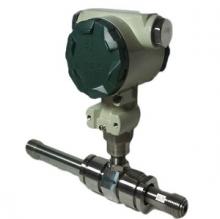
Basically, it measures the flow rate of fluid in a pipe or cylinder. By obstructing the flow, it sets up a voltage. Measuring the voltage determines how fast the fluid flows in the pipe. Measurements can be made on a wide range of fluids with varying viscosities, including oils, chemicals, water, and petrochemicals. The 1/4″ flow sensor size is a microturbine flow meter for measuring clean liquid at low flow rates. The 1/4″ flow meter is the equivalent of 6mm.

